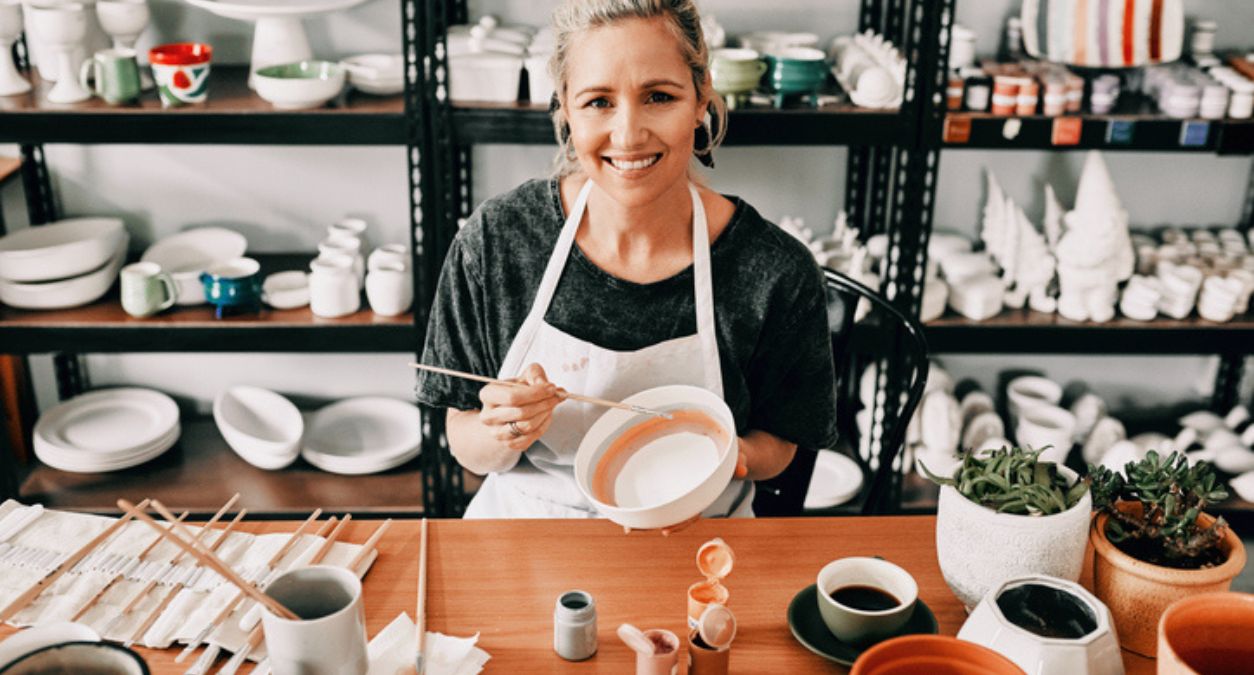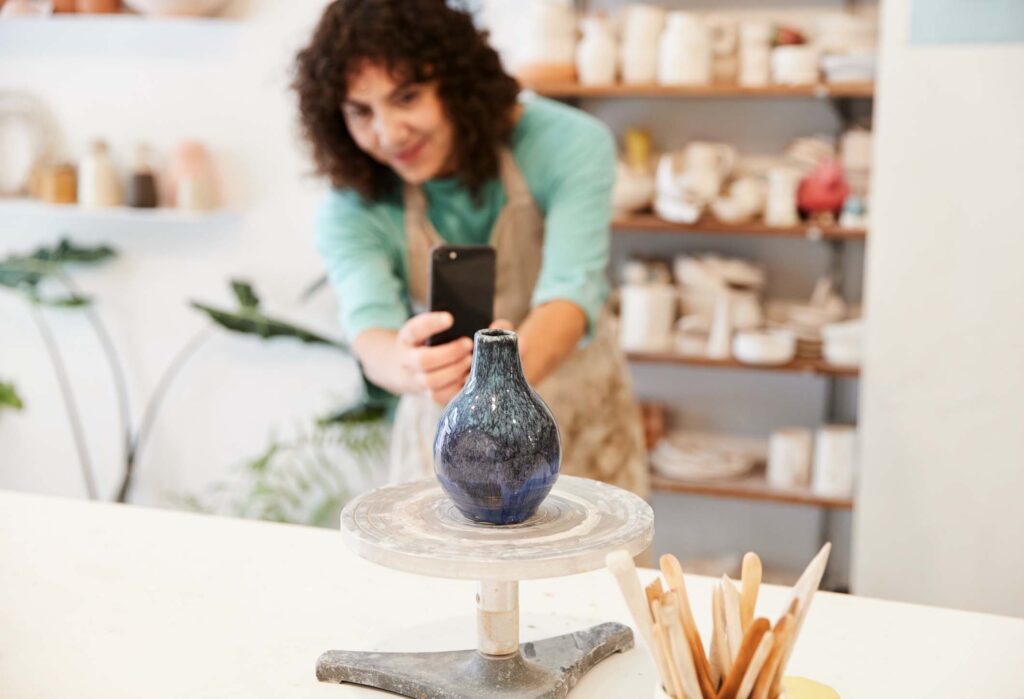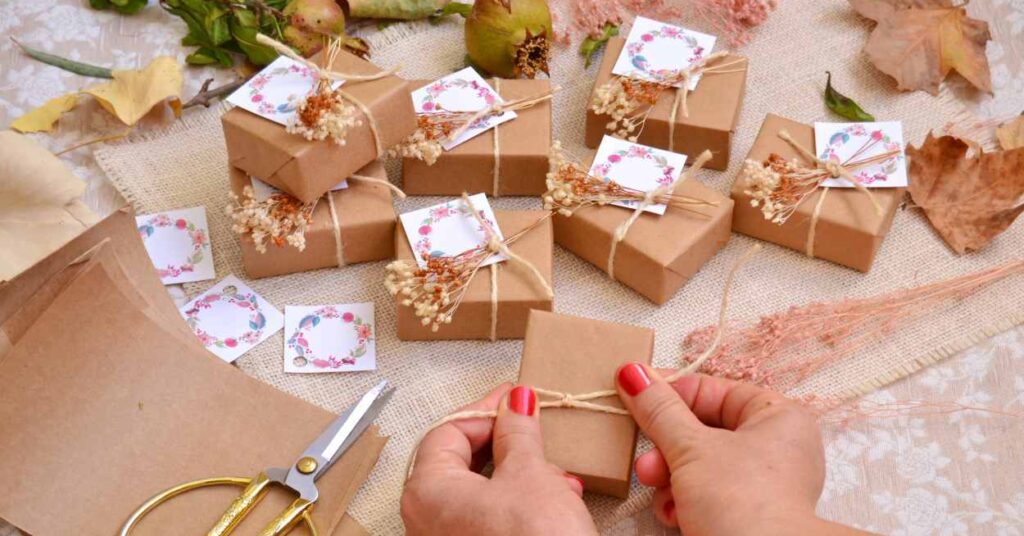Table of contents
Table of contents
Starting a craft business is an exciting step—whether you’re looking to make a bit of extra cash on the side, launch a home-based venture, or eventually turn your passion into a full-time gig. If you love creating—whether its knitting, jewellery making, woodworking, ceramics, or anything in between—there’s real potential to turn that hobby into a rewarding business.
And you’re not alone. As of early 2025, the UK is home to over 19.5 million crafters and more than 11,000 craft-based businesses. With around 13.3% of adults buying a handmade item in the past year, there’s clearly a growing appreciation for quality, unique, and handmade goods.
But turning your passion into profit takes more than creativity. It’s important to understand the startup costs, legal requirements, and practical steps needed to build something sustainable. The good news? You don’t need a huge budget to get started. Many makers begin small testing the waters through online platforms or local craft fairs before scaling up.
This guide will walk you through the essentials—from how much it might cost to launch your craft business, to what licences or registrations you may need, how others are successfully making money from their crafts, and most importantly, how you can start small and grow with confidence.
What are essential craft business startup costs?

Craft business start-up costs can vary based on the scale and nature of your company. However, here’s a general breakdown of key costs to be aware of plus a sensible percentage of how much to allocate from your start up budget.
Essential Startup Costs (Approx. 70–80% of your budget)
These are the non-negotiables—the things you’ll absolutely need to get your craft business off the ground.
Materials and Supplies (25–35%)
This is where most of your budget will likely go. The materials you need will depend on your craft, whether that’s fabric and thread, beads and wire, or wood and paint. Try to buy in bulk or find trade discounts if you can.
Equipment and Tools (15–20%)
You don’t need the fanciest tools, but you do need the right ones for the job. Think sewing machines, power tools, or moulds—whatever helps you create your products efficiently and to a high standard.
Workspace Setup (5–10%)
Whether it’s a spare room, garage, or corner of the kitchen, you’ll need a functional and organised workspace. This might mean a few basic furnishings, lighting, and possibly small upgrades to your space.
Packaging and Shipping (5–10%)
If you plan to sell online or post out orders, you’ll need boxes, bubble wrap, labels, and postage costs. Start small and scale up as orders come in.
Business Registration and Insurance (5–7%)
Get registered properly and consider essential insurance like public and product liability. These costs protect you legally and help you run your business with confidence.
Accounting or Bookkeeping Tools (2–3%)
Even a simple spreadsheet can do at first, but investing in accounting software or light help from a bookkeeper will save you time and stress when tax season rolls around.
Nice-to-Have Startup Costs (Approx. 20–30% of your budget)
Once your essentials are covered, these are great extras to build your brand and grow your customer base.
Marketing and Promotion (5–10%)
Social media is free—but things like a website, business cards, or paid ads can help you look more professional and reach new customers. Don’t overspend early on; start small and test what works.
Photography and Branding (5–7%)
Great photos can make your products stand out. If you can afford it, invest in a basic camera or hire a pro for a quick product shoot. A consistent brand look and logo can also help people remember you.
Storage and Inventory Management (3–5%)
As your stock grows, you might need better storage at home or even rent space. At the beginning, though, clear plastic bins and shelves might do the trick.
Travel and Craft Fair Costs (3–5%)
Attending local markets or fairs can be a great way to get noticed. But booths, travel, and accommodation can add up. Start locally or test just a few events to see if they’re worth the investment.
Contingency Fund (Always aim for 5%)
Things will go wrong—orders might be delayed, prices may rise, or a machine might break. Having a small buffer gives you peace of mind and flexibility when unexpected costs pop up.
Much of these ‘nice-to-have’ options are things you can do for free so here’s an example of budget allocation for a £2000 startup budget.
| Essential Category | % of Budget | £ Allocation | Notes / Examples |
| Materials & Supplies | 40% | £800 | Stock up on raw materials specific to your craft (e.g. fabric, wood, beads) |
| Equipment & Tools | 25% | £500 | Purchase or upgrade key tools or machinery needed to create your products |
| Workspace Setup | 10% | £200 | Set up a functional home workspace (e.g. table, lighting, storage bins) |
| Packaging & Shipping | 10% | £200 | Buy packaging materials and cover initial shipping costs |
| Registration & Insurance | 10% | £200 | Cover legal registration fees and basic insurance (e.g. public liability) |
| Accounting / Bookkeeping | 5% | £100 | Invest in simple accounting software or a consultation with a bookkeeper |
Do I need to register to sell crafts in the UK?
Get Crafters Insurance from Protectivity

*Disclaimer – This blog has been created as general information and should not be taken as advice. Make sure you have the correct level of insurance for your requirements and always review policy documentation. Information is factually accurate at the time of publishing but may have become out of date.
Last updated by

















